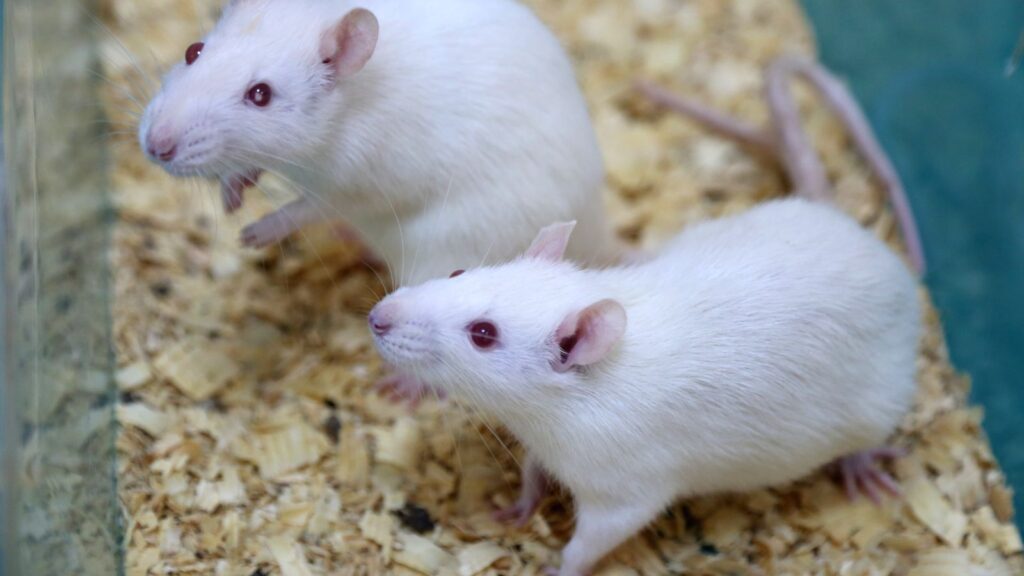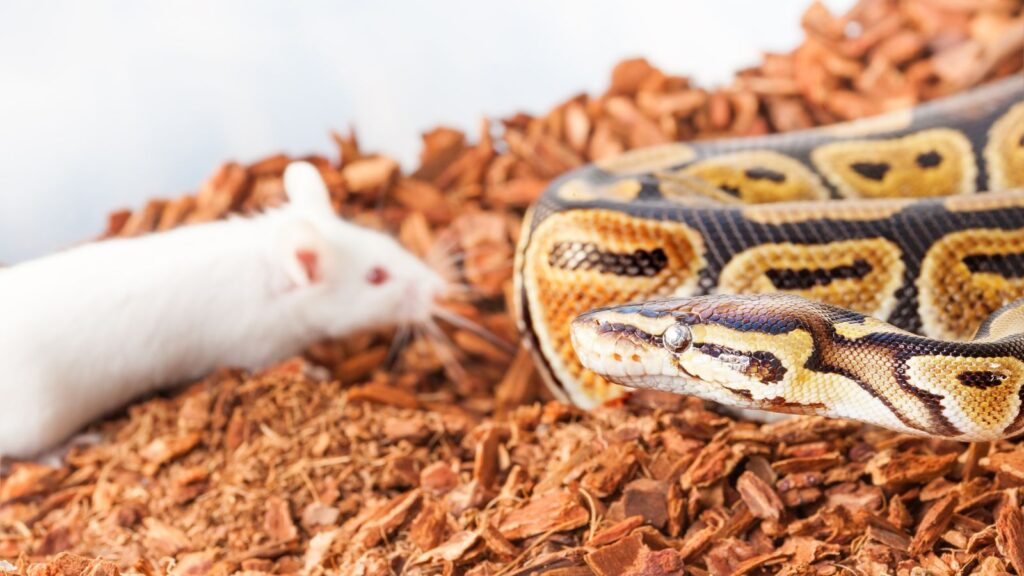Estimated Reading Time: 4 Minutes
Many snake handlers offer their pets frozen rodents for safety, convenience, and ethical reasons. Others argue that live prey provides more nutrients and encourages natural behaviors.
So is which the better choice?
This brief post outlines a few important things to consider like health factors, stimulation, convenience, and costs.
Which is the Healthier Snake Food?

The most important consideration for live vs frozen-thawed rodents is the implication on your snake’s health.
Here are three factors to think about:
- Nutritional Value
- Risk of disease
- Risk of injury
Nutritional Value
Whether pre-killed or alive, rats and mice provide snakes with essential proteins, fats, vitamins, and minerals.
Frozen rodents do lose some nutrients when stored over time, but it’s a minimal loss. Even after a couple of months of being stored in a freezer, the nutritional value of frozen-thawed prey is very comparable to live rodents.
Risk of Disease
Living rodents have a much higher chance of carrying parasites that can sicken your snake. According to the Centers for Disease Control, they may also carry several zoonotic diseases that affect humans, like hantavirus, salmonella, monkeypox, rat-bite fever, and more.
Many snake handlers choose frozen prey because this process kills off and prevents the growth of some bacteria.
Still, whether frozen or live, always practice proper hygiene when handling them. Wear gloves, keep your hands away from your mouth/face, and thoroughly wash your hands before and after handling.
Risk of Injury
When you offer your snake living prey there is always a chance of injury. Rodents of any size will bite, scratch, and claw, which can seriously hurt your pet.
On the other hand, hunting is a natural behavior and stimulating activity of snakes, and some feel that warrants live prey.
In regards to safety, most handlers believe the pros of pre-killed prey outweigh the cons of live prey.
Try other forms of entertainment like toys and decor to encourage natural behaviors and exercise without sacrificing safety.
Convenience of Frozen-Thawed vs Living Rodents

Feeding with frozen-thawed rodents is considerably more convenient than live prey.
Frozen prey are:
- Easy to buy in bulk, store, and handle
- A consistent and readily available food source
- Not required to have special housing or care
- An almost effortless feeding process (depending on how you interact with your snake)
Meanwhile, live rodents will require:
- Finding reputable breeders
- Maintaining a consistent source of healthy, live prey
- Additional housing, feeding, and watering responsibilities
- A more stressful snake-feeding process
Which is More Cost-effective?

Frozen-thawed rodents are often less expensive than acquiring live ones. You can find bulk packages online or at pet stores to decrease your price per rodent.
You can acquire live rodents from certain breeders, but you might pay a premium because of supply, storing, and shipping obstacles.
What If I Breed My Own Rodents?
There are several start-up costs associated with breeding, like getting food, a rodent rack, a watering system, heating attachments, and other equipment.
However, once you’ve made your initial investment and the operation is up and running, many breeders find lower long-term costs, a constant supply of snake food, and assurance that their rodents are healthy and well-kept. Plus, business-savvy breeders can sell and profit from their extra supply of rodents!
If you want to start breeding rodents or expand your current operation, we have all the equipment you need!
Also learn about the Vision ULTRA, our brand-new line of rodent breeding racks!
Which Gives My Snake More Stimulation?

A live rodent will make your snake work for its meal, triggering their hunting instincts, promoting exercise, and engaging their cognitive abilities.
Pre-killed prey doesn’t offer the same effect, and some snakes refuse pre-killed food altogether.
But you can imitate a live rodent by holding the prey with forceps that keep you at a safe distance, then dangle and move it around the enclosure to encourage your snake to strike.
You can also rub the food on different things around the enclosure to make a trail for your snake to follow, and it should trigger the stimulation you and your snake are looking for.
If these are unsuccessful, try other feeding methods like adjusting feeding time and the size or appearance of the prey.
Conclusion
Most handlers believe that captive snakes should be trained to eat pre-euthanized rodents since it’s more humane for the prey and overall safer for the snake.
Others believe that fresh prey and the stimulation of the hunt are essential for their snake’s mental and physical health.
Ultimately, the decision to feed frozen-thawed or live rodents depends on the individual snake, the owner’s preferences, and the specific circumstances of the reptile’s environment.
